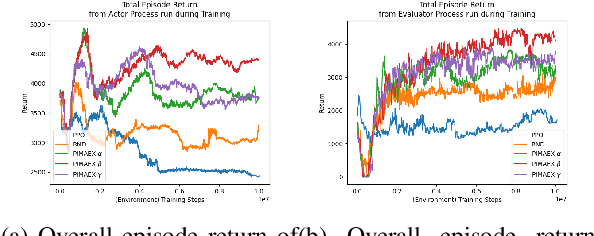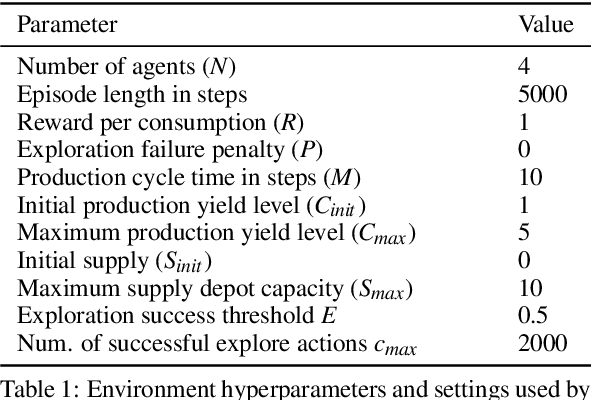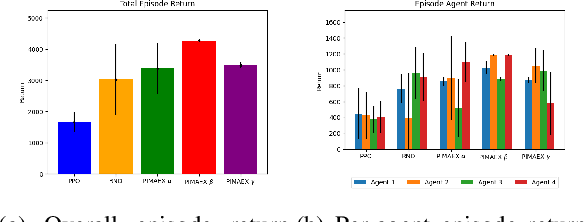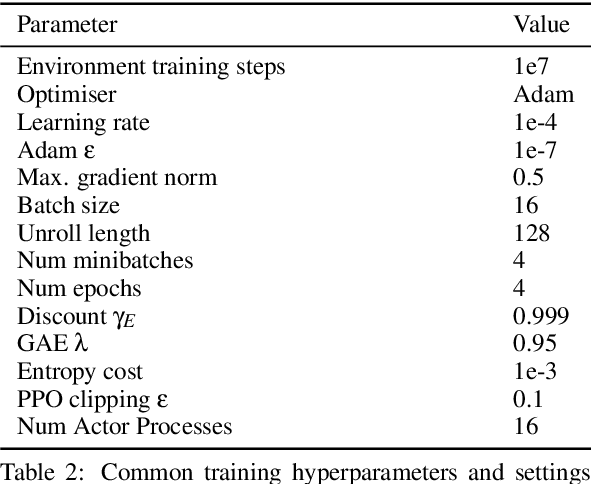Claudia Linnhoff-Popien
LMU Munich
Quantum Boltzmann Machines using Parallel Annealing for Medical Image Classification
Jul 18, 2025Abstract:Exploiting the fact that samples drawn from a quantum annealer inherently follow a Boltzmann-like distribution, annealing-based Quantum Boltzmann Machines (QBMs) have gained increasing popularity in the quantum research community. While they harbor great promises for quantum speed-up, their usage currently stays a costly endeavor, as large amounts of QPU time are required to train them. This limits their applicability in the NISQ era. Following the idea of No\`e et al. (2024), who tried to alleviate this cost by incorporating parallel quantum annealing into their unsupervised training of QBMs, this paper presents an improved version of parallel quantum annealing that we employ to train QBMs in a supervised setting. Saving qubits to encode the inputs, the latter setting allows us to test our approach on medical images from the MedMNIST data set (Yang et al., 2023), thereby moving closer to real-world applicability of the technology. Our experiments show that QBMs using our approach already achieve reasonable results, comparable to those of similarly-sized Convolutional Neural Networks (CNNs), with markedly smaller numbers of epochs than these classical models. Our parallel annealing technique leads to a speed-up of almost 70 % compared to regular annealing-based BM executions.
Surrogate Fitness Metrics for Interpretable Reinforcement Learning
Apr 20, 2025Abstract:We employ an evolutionary optimization framework that perturbs initial states to generate informative and diverse policy demonstrations. A joint surrogate fitness function guides the optimization by combining local diversity, behavioral certainty, and global population diversity. To assess demonstration quality, we apply a set of evaluation metrics, including the reward-based optimality gap, fidelity interquartile means (IQMs), fitness composition analysis, and trajectory visualizations. Hyperparameter sensitivity is also examined to better understand the dynamics of trajectory optimization. Our findings demonstrate that optimizing trajectory selection via surrogate fitness metrics significantly improves interpretability of RL policies in both discrete and continuous environments. In gridworld domains, evaluations reveal significantly enhanced demonstration fidelities compared to random and ablated baselines. In continuous control, the proposed framework offers valuable insights, particularly for early-stage policies, while fidelity-based optimization proves more effective for mature policies. By refining and systematically analyzing surrogate fitness functions, this study advances the interpretability of RL models. The proposed improvements provide deeper insights into RL decision-making, benefiting applications in safety-critical and explainability-focused domains.
Evaluating Parameter-Based Training Performance of Neural Networks and Variational Quantum Circuits
Apr 09, 2025



Abstract:In recent years, neural networks (NNs) have driven significant advances in machine learning. However, as tasks grow more complex, NNs often require large numbers of trainable parameters, which increases computational and energy demands. Variational quantum circuits (VQCs) offer a promising alternative: they leverage quantum mechanics to capture intricate relationships and typically need fewer parameters. In this work, we evaluate NNs and VQCs on simple supervised and reinforcement learning tasks, examining models with different parameter sizes. We simulate VQCs and execute selected parts of the training process on real quantum hardware to approximate actual training times. Our results show that VQCs can match NNs in performance while using significantly fewer parameters, despite longer training durations. As quantum technology and algorithms advance, and VQC architectures improve, we posit that VQCs could become advantageous for certain machine learning tasks.
Evaluating Mutation Techniques in Genetic Algorithm-Based Quantum Circuit Synthesis
Apr 08, 2025Abstract:Quantum computing leverages the unique properties of qubits and quantum parallelism to solve problems intractable for classical systems, offering unparalleled computational potential. However, the optimization of quantum circuits remains critical, especially for noisy intermediate-scale quantum (NISQ) devices with limited qubits and high error rates. Genetic algorithms (GAs) provide a promising approach for efficient quantum circuit synthesis by automating optimization tasks. This work examines the impact of various mutation strategies within a GA framework for quantum circuit synthesis. By analyzing how different mutations transform circuits, it identifies strategies that enhance efficiency and performance. Experiments utilized a fitness function emphasizing fidelity, while accounting for circuit depth and T operations, to optimize circuits with four to six qubits. Comprehensive hyperparameter testing revealed that combining delete and swap strategies outperformed other approaches, demonstrating their effectiveness in developing robust GA-based quantum circuit optimizers.
Investigating Parameter-Efficiency of Hybrid QuGANs Based on Geometric Properties of Generated Sea Route Graphs
Jan 15, 2025Abstract:The demand for artificially generated data for the development, training and testing of new algorithms is omnipresent. Quantum computing (QC), does offer the hope that its inherent probabilistic functionality can be utilised in this field of generative artificial intelligence. In this study, we use quantum-classical hybrid generative adversarial networks (QuGANs) to artificially generate graphs of shipping routes. We create a training dataset based on real shipping data and investigate to what extent QuGANs are able to learn and reproduce inherent distributions and geometric features of this data. We compare hybrid QuGANs with classical Generative Adversarial Networks (GANs), with a special focus on their parameter efficiency. Our results indicate that QuGANs are indeed able to quickly learn and represent underlying geometric properties and distributions, although they seem to have difficulties in introducing variance into the sampled data. Compared to classical GANs of greater size, measured in the number of parameters used, some QuGANs show similar result quality. Our reference to concrete use cases, such as the generation of shipping data, provides an illustrative example and demonstrate the potential and diversity in which QC can be used.
Optimization of Link Configuration for Satellite Communication Using Reinforcement Learning
Jan 14, 2025Abstract:Satellite communication is a key technology in our modern connected world. With increasingly complex hardware, one challenge is to efficiently configure links (connections) on a satellite transponder. Planning an optimal link configuration is extremely complex and depends on many parameters and metrics. The optimal use of the limited resources, bandwidth and power of the transponder is crucial. Such an optimization problem can be approximated using metaheuristic methods such as simulated annealing, but recent research results also show that reinforcement learning can achieve comparable or even better performance in optimization methods. However, there have not yet been any studies on link configuration on satellite transponders. In order to close this research gap, a transponder environment was developed as part of this work. For this environment, the performance of the reinforcement learning algorithm PPO was compared with the metaheuristic simulated annealing in two experiments. The results show that Simulated Annealing delivers better results for this static problem than the PPO algorithm, however, the research in turn also underlines the potential of reinforcement learning for optimization problems.
PIMAEX: Multi-Agent Exploration through Peer Incentivization
Jan 02, 2025



Abstract:While exploration in single-agent reinforcement learning has been studied extensively in recent years, considerably less work has focused on its counterpart in multi-agent reinforcement learning. To address this issue, this work proposes a peer-incentivized reward function inspired by previous research on intrinsic curiosity and influence-based rewards. The \textit{PIMAEX} reward, short for Peer-Incentivized Multi-Agent Exploration, aims to improve exploration in the multi-agent setting by encouraging agents to exert influence over each other to increase the likelihood of encountering novel states. We evaluate the \textit{PIMAEX} reward in conjunction with \textit{PIMAEX-Communication}, a multi-agent training algorithm that employs a communication channel for agents to influence one another. The evaluation is conducted in the \textit{Consume/Explore} environment, a partially observable environment with deceptive rewards, specifically designed to challenge the exploration vs.\ exploitation dilemma and the credit-assignment problem. The results empirically demonstrate that agents using the \textit{PIMAEX} reward with \textit{PIMAEX-Communication} outperform those that do not.
Coconut Palm Tree Counting on Drone Images with Deep Object Detection and Synthetic Training Data
Dec 16, 2024



Abstract:Drones have revolutionized various domains, including agriculture. Recent advances in deep learning have propelled among other things object detection in computer vision. This study utilized YOLO, a real-time object detector, to identify and count coconut palm trees in Ghanaian farm drone footage. The farm presented has lost track of its trees due to different planting phases. While manual counting would be very tedious and error-prone, accurately determining the number of trees is crucial for efficient planning and management of agricultural processes, especially for optimizing yields and predicting production. We assessed YOLO for palm detection within a semi-automated framework, evaluated accuracy augmentations, and pondered its potential for farmers. Data was captured in September 2022 via drones. To optimize YOLO with scarce data, synthetic images were created for model training and validation. The YOLOv7 model, pretrained on the COCO dataset (excluding coconut palms), was adapted using tailored data. Trees from footage were repositioned on synthetic images, with testing on distinct authentic images. In our experiments, we adjusted hyperparameters, improving YOLO's mean average precision (mAP). We also tested various altitudes to determine the best drone height. From an initial mAP@.5 of $0.65$, we achieved 0.88, highlighting the value of synthetic images in agricultural scenarios.
Swarm Behavior Cloning
Dec 10, 2024Abstract:In sequential decision-making environments, the primary approaches for training agents are Reinforcement Learning (RL) and Imitation Learning (IL). Unlike RL, which relies on modeling a reward function, IL leverages expert demonstrations, where an expert policy $\pi_e$ (e.g., a human) provides the desired behavior. Formally, a dataset $D$ of state-action pairs is provided: $D = {(s, a = \pi_e(s))}$. A common technique within IL is Behavior Cloning (BC), where a policy $\pi(s) = a$ is learned through supervised learning on $D$. Further improvements can be achieved by using an ensemble of $N$ individually trained BC policies, denoted as $E = {\pi_i(s)}{1 \leq i \leq N}$. The ensemble's action $a$ for a given state $s$ is the aggregated output of the $N$ actions: $a = \frac{1}{N} \sum{i} \pi_i(s)$. This paper addresses the issue of increasing action differences -- the observation that discrepancies between the $N$ predicted actions grow in states that are underrepresented in the training data. Large action differences can result in suboptimal aggregated actions. To address this, we propose a method that fosters greater alignment among the policies while preserving the diversity of their computations. This approach reduces action differences and ensures that the ensemble retains its inherent strengths, such as robustness and varied decision-making. We evaluate our approach across eight diverse environments, demonstrating a notable decrease in action differences and significant improvements in overall performance, as measured by mean episode returns.
Optimizing Sensor Redundancy in Sequential Decision-Making Problems
Dec 10, 2024



Abstract:Reinforcement Learning (RL) policies are designed to predict actions based on current observations to maximize cumulative future rewards. In real-world applications (i.e., non-simulated environments), sensors are essential for measuring the current state and providing the observations on which RL policies rely to make decisions. A significant challenge in deploying RL policies in real-world scenarios is handling sensor dropouts, which can result from hardware malfunctions, physical damage, or environmental factors like dust on a camera lens. A common strategy to mitigate this issue is the use of backup sensors, though this comes with added costs. This paper explores the optimization of backup sensor configurations to maximize expected returns while keeping costs below a specified threshold, C. Our approach uses a second-order approximation of expected returns and includes penalties for exceeding cost constraints. We then optimize this quadratic program using Tabu Search, a meta-heuristic algorithm. The approach is evaluated across eight OpenAI Gym environments and a custom Unity-based robotic environment (RobotArmGrasping). Empirical results demonstrate that our quadratic program effectively approximates real expected returns, facilitating the identification of optimal sensor configurations.
 Add to Chrome
Add to Chrome Add to Firefox
Add to Firefox Add to Edge
Add to Edge